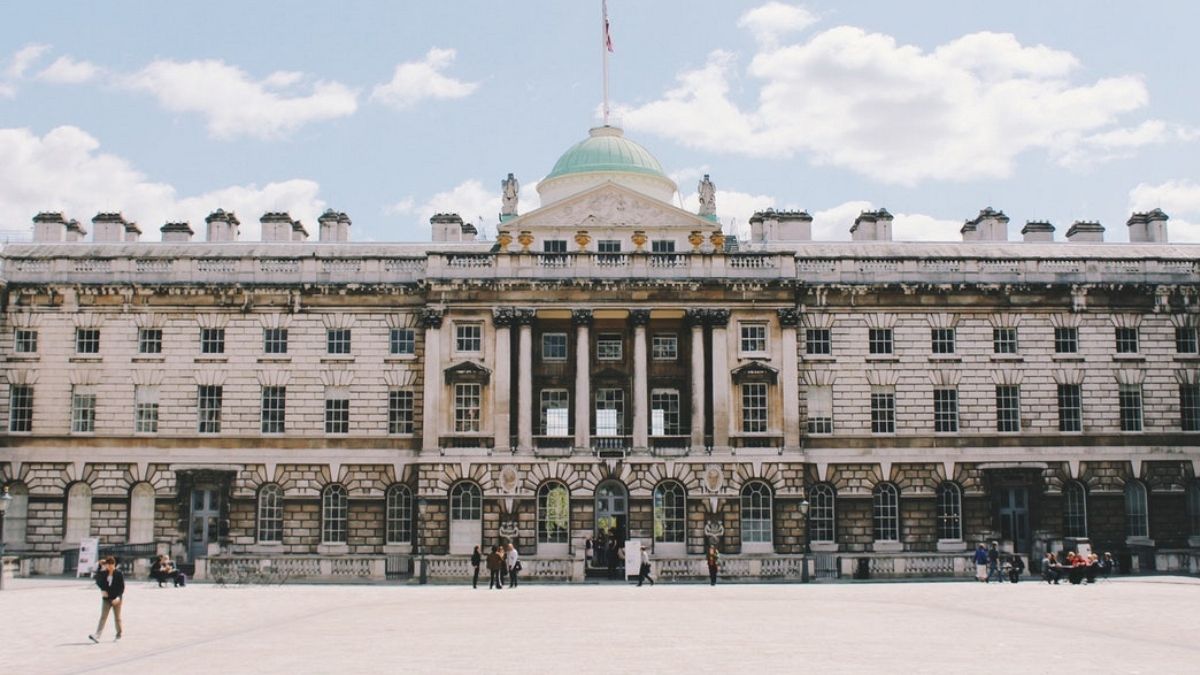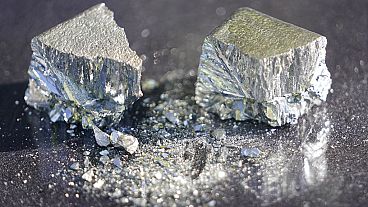What unites philosophy, poetry, mushrooms and worms? Earth Day Season at Somerset House, obviously.
What unites philosophy, poetry, mushrooms and worms? Earth Day Season at Somerset House, obviously. Returning to the grand Grade I listed historical site for a fortnight of immersive installations and events, the programme brings together works exploring creative reactions to climate change by leading artists from around the globe.
For curator Karishma Rafferty, the event has been a year in the making. From American artist and environmental activist Justin Brice Guariglia’s Reduce Speed Now! – an installation of 9 solar-powered signs – to the dystopian underwater world presented by masters of speculative design Hyphen-Labs, via poetry on loneliness, the common theme, Rafferty says, is “language and voices”.
“For me, the most important thing is generating new conversations,” says Rafferty. “The more we engage, the clearer it is that environmental sustainability touches every aspect of our daily lives. It relates to food, migration, power and inequality, economics, health, consumption. I hope that what emerges is the range of perspectives out there. Climate change isn’t just about polar bears and plastic straws! It’s important to engage with stories and ideas from around the world.”
Forming part of Somerset House’s wider commitment to sustainability, Earth Day Season kicks off 16th April. Here, Rafferty gives us a taste of what to expect, from post-human futures to audio inspired by Goddess Khaos of air and wind.
How long does a two-week season like this take to prepare, and what points are you bearing in mind during the curation process?
“We’ve known that we’d like to do some programming around environmental themes in April for about a year. Each of the installations involve different types of content, but the common thread is the role of language and global voices. That’s why we’ve featured content from islanders living on the frontlines of rising sea levels, audio inspired by the Goddess Khaos of air and wind, poetry on loneliness, and stories about possible underwater futures.”
How did the collaboration with Justin Brice Guariglia come about?
“I was aware of his work at New York’s Storm King Art Center last year and was interested in the collaboration with philosopher Timothy Morton, so I got in touch. Over a series of conversations, the idea of doing something involving multiple writers and thinkers in the Somerset House courtyard evolved.”
Which installations should we be most excited about?
“Ah, I can’t say! What I’m excited about is the mix of different artforms, perspectives and language involved. With Reduce Speed Now!, there’s a participative element works where we ask visitors to contribute to one of the signs – I’m excited to see how that works. I’m looking forward to the mix of content, too. We have voices from activists like Greta Thunberg, and have explored everything from philosophy to poetry, to mushrooms and worms!”
Outside of Earth Day Season, how does Somerset House commit to a wider policy of sustainability?
“Our building’s team has worked for many years to make the energy, lighting and waste processes of our Grade I listed historical site as efficient and sustainable as possible. We have a community of over 2500 residents working in the creative sector as artists, makers or smaller arts charities and businesses. Many of them work on projects related to environmental sustainability and we hold monthly meetups to share knowledge and offer support. Of course, like everyone, there’s lots more we could be doing, so we have an internal steering group to identify areas for improvement.”
Tell us a little more about Hyphen Labs' The Anxious Ocean and The Moon-Brothers installation?
“Hyphen-Labs is a collective of women of colour and a Somerset House Studios resident. They often work on speculative design, and we spoke about a new project that engages in climate themes. I particularly wanted to think about London and what it means to connect to global challenges that are far away from everyday life. Supported by Creative Producers International, a programme run by the Watershed, which is all about city change, the installation depicts a deep ocean of the future, where life has adopted certain human desires and anxieties. The story references AI, data leaks, social media addiction and climate anxiety but is presented in a funny, almost absurd way. Sometimes telling stories about the ridiculous makes it is easier to weave in truths.”
What technologies were used in Serena Korda’s Khaos Spirit audio commission?
“This was a fun piece to develop! Serena spent time up on the roof of Somerset House and around the building, recording audio. She also used data from an anemometer, a wind measuring device. The final work involves a flag and audio piece – the flag references maritime warning signals and the audio, or the voice of the wind, references the warnings in our daily environment. If we listened a little more deeply to the changing weather patterns and extreme weather around the world, perhaps we’d collectively take more action on climate change!”
How can leading arts institutions take a more active role in the conversation surrounding sustainability?
“Lots of arts institutions are presenting projects or initiatives that focus on sustainability. I’m interested in how we get to a point where institutions programme works that can help society rethink how we live together. The writer Amitav Ghosh writes that the climate crisis is a crisis of culture, and thus of the imagination. Arts and culture of all sorts is critical in creating the time, space and opportunity to be imaginative about how we transform the ways we live in years to come!”
Words: Mary-Jane Wiltsher



